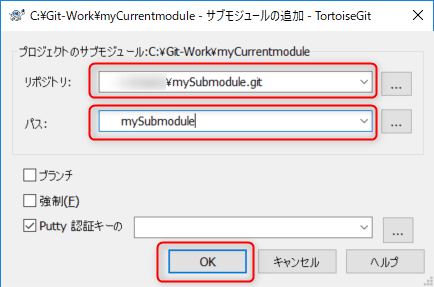

- #Git submodule add update
- #Git submodule add archive
- #Git submodule add code
- #Git submodule add series
If the URL is given relative to the superproject’s repository, the presumption is the superproject and submodule repositories will be kept together in the same relative location, and only the superproject’s URL needs to be provided. You could even have multiple remotes at the same time, all working as expected. gitmodules for use by subsequent users cloning the superproject. Additionally, they will make it easier to migrate your repositories to a different organization or Git host as you won't need to change the submodule configuration for that. They don't force all developers to use HTTPS or SSH leaving them the freedom of choice. I would recommend using relative submodule URLs whenever possible.
#Git submodule add update
Update all modules from the now correct remote URL using the following command in the repository root (because it is called recursively on all submodules, even nested ones): git submodule update - init - recursive - remote gitmodules file which stores the submodule version when the submodule was added. What prevents for a submodule to be updated is the. In this example, we’ll add a library called DbConnector.

#Git submodule add code
This way, the submodules code wont automatically be updated if the submodules repository is updated. To add a new submodule you use the git submodule add command with the absolute or relative URL of the project you would like to start tracking. gitmodules file (not necessarily the repository root if its submodules contain other nested submodules): git submodule sync Upon running git submodule add command, the submodules code is added to the repository. You can also set to checkout, rebase, or merge, in which case git submodule update -init obeys whatever you set here. With git submodule update -rebase or git submodule update -merge, the branch setting begins to matter. This file gets committed to Git.įorce submodules to resynchronize with the modified file using the following command in the folder with the modified. This happens regardless of whether there is a branch setting. In the root of the parent, issue a git submodule add command and provide the GitHub repository’s URL. The easiest way I found to do that is as follows: Clone the parent or top-level repository. To fix the issue for me (and other SSH users) in repositories which already contain submodules with HTTPS URLs, I have to change the URL. or Usually all repositories in a project are at least hosted in the same service, so this technique can be used. The URL in the command is the URL for the.
mySubmodule.git example would work as long as the parent repository is in the same GitHub organization, e.g. To add the keyword package from GitHub to our test project repository, we use the git submodule addThis works for both HTTPS and SSH users because it uses the root repository URL as base onto which the relative path is applied. The solution is to use a relative URL instead: Url = course, that would cause problems for HTTPS users. Git can handle that but requires you to authenticate over HTTPS, effectively using two different authentication methods for a single repository.įor an SSH user, a correct configuration would be the following: The issue with the above example for an SSH user is the absolute HTTPS path. Each submodule definition consists of a path inside the repository where the files from the submodule are placed and a URL of its repository, as in the following example: Git repositories with submodules are a different story, though. Fortunately, the way I connect to the repository usually doesn't matter, as all Git hosting services support both HTTPS and SSH. Generally speaking though, what the porcelain doesn't cover is outside of the scope of this book.I prefer using Git over SSH which makes me a minority in most teams I work with. The first step is to create a new repository for the submodule.

You can git init a parent directory, and create your own ".gitmodules", then follow it up with a git submodule init. ^ Well that isn't true at all, Git supports this as of v1.5.3, but the official porcelain doesn't. A Git superproject may consist of a set of git repositories and each of these git repositories is called a submodule.You can think of a submodule as a.git submodule update to push change to the individual repositories that predate the superproject.

The work flow of superprojects, and submodules should generally adhere to the following:
#Git submodule add archive
They can then git submodule init all of those that they wish to utilize.Ī git archive is said to become a submodule the second after you execute git submodule add in another git repository.
#Git submodule add series
When someone pulls down the superproject, they will see a series of empty folders for each submodule. The resulting structure will look similar to this: A quick aside, you can not currently git submodule add git repositories that are direct children within the same directory. To create a superproject, simply git init any directory, and git submodule add all of the git archives you wish to include. A Superproject, is simply a git repository.


 0 kommentar(er)
0 kommentar(er)
